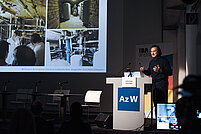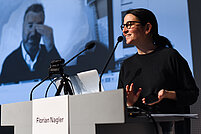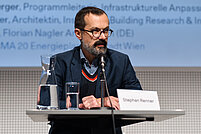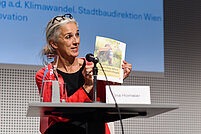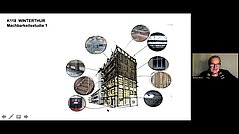It’s Getting Hot! Climate Change in the City: Symposium
2021
Symposium
"The most climate-friendly house is the house that is never built", as Gerlind Weber likes to say even though she knows that this is not really an option. How, then, can we make building more climate-friendly by design? How can we improve the carbon footprint of existing buildings and existing neighbourhoods? How can a city prepare for climate change, mitigating any negative impact while establishing climate justice? These and other questions were addressed at this symposium, attended by distinguished experts from around the world.
PROGRAMME
Session 1, Decarbonised!
Many paths lead to the so-called decarbonization of buildings. This is not only about operation - such as electricity, heating, ventilation - but also about the "gray energy" of the raw materials for the construction of the building itself and its life cycle.
- Johannes Zeininger, architect and joint owner of SMART Block Geblergasse
- Barbara Buser, baubüro in situ, on the reuse of structural elements and materials (CH)
- Norbert Mayr, architecture historian, initiator and co-developer of MGG22 — Wohnen morgen
- Florian Nagler, Florian Nagler Architekten, on 3 houses in Bad Aibling (DE)
Session 2, panel discussion: The Viennese Context
What are the climate targets of the City of Vienna? In which time horizon are they to be achieved? How can the formulation of the goals support the achievement of the goals? What processes are needed to bring about the transformation with the population and not against it? What do the climate strategies of other European cities look like?
Part 1: What Are The Targets We Have To Meet?
- Heinz Buschmann, programme manager, Klima- und Energiefonds
- Kurt Hofstetter, coordinator, IBA_Vienna
- Ina Homeier, Smart City Wien
- Stephan Renner, Federal Ministry for Climate Action, Environment, Energy, Mobility, Innovation and Technology
Part 2: How Can We Achieve Our Goals?
- Gerhard Bayer, project manager, AnergieUrban, ÖGUT
- Maria Ebetsberger, programme manager, on Infrastructural Adaptation for Climate Change (InKA), City of Vienna Construction Office
- Renate Hammer, architect, Institute of Building Research & Innovation
- Florian Nagler, Florian Nagler Architekten (DE)
- Stefan Sattler, MA 20, City of Vienna Energy Planning
Moderated by Franziska Leeb, architecture publicist
Session 3: Climate Change in the City
Consideration at the district level: How does climate-resilient city work? Can we adapt the densely built city to climate change? Can we learn from southern cities? What is the basis for mobility in a climate-neutral city? How do we achieve climate justice for all city residents?
- Tanja Tötzer, Thematic Coordinator, AIT Austrian Institute of Technology GmbH, on LiLa4Green
- Martin Berchtold, berchtoldkrass space&options / Kaiserslautern University of Technology, on The Climate Adaptation Concepts in Karlsruhe, Freiburg (DE) and Zurich (CH)
- Monika Löve, Carlo Ratti Associati, on Parco Romana in Milan (IT)
Followed by a panel discussion with additional guests:
- Susanne Formanek, CEO, GRÜNSTATTGRAU
- Heinrich Schuller, ATOS Architekten, www.architects4future.at
- Oliver Gerner, partner at GERNER GERNER PLUS.
Moderated by Karoline Mayer, Az W
Keynote Lecture
- Camilla van Deurs, Copenhagen City Architect on Copenhagen's Climate Strategy (DK)
Moderated by Angelika Fitz, director Az W
This event was held in German and English.
A cooperation of Az W with IBA_Vienna. Concept: Karoline Mayer, Az W
All sessions to watch here.
